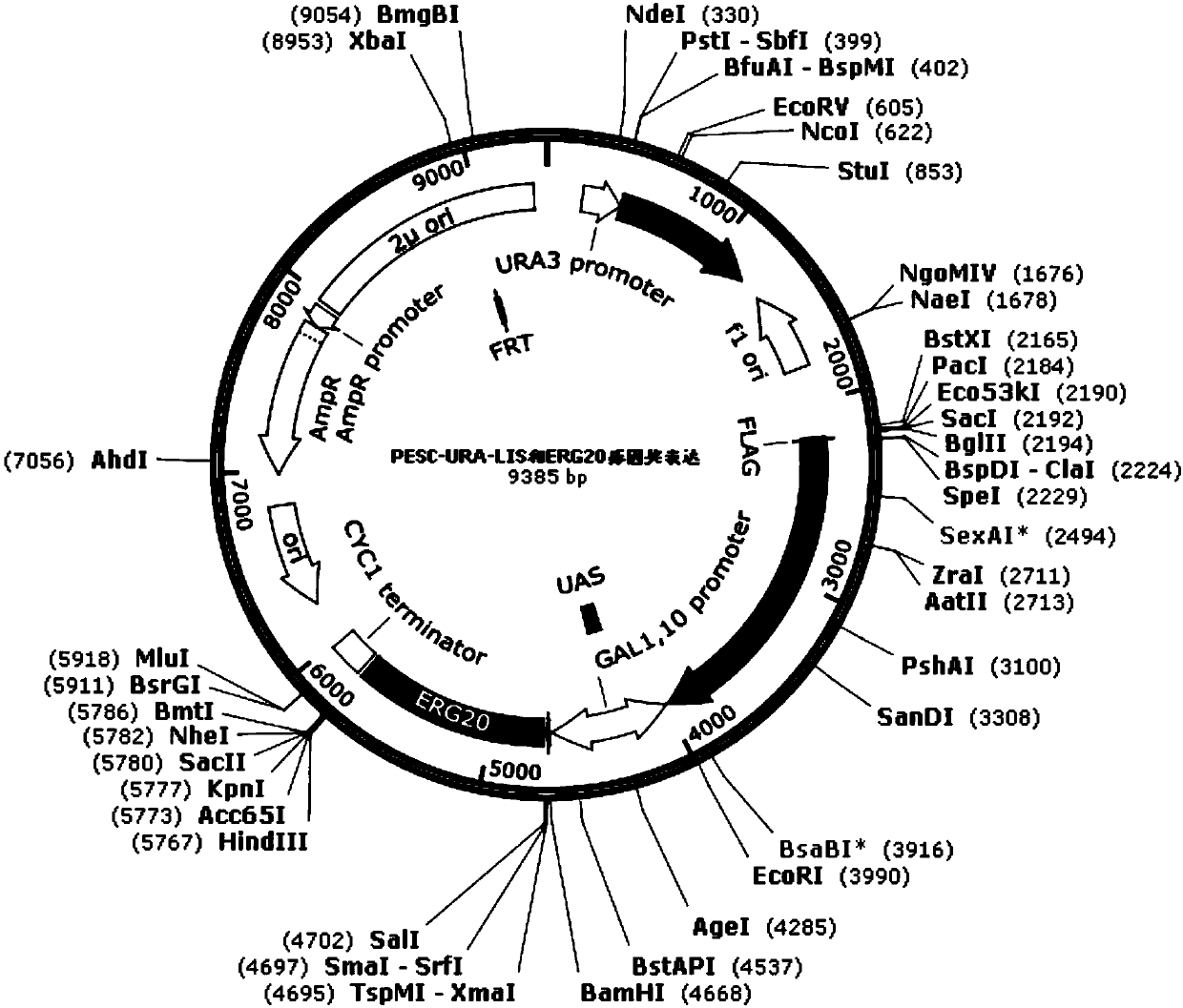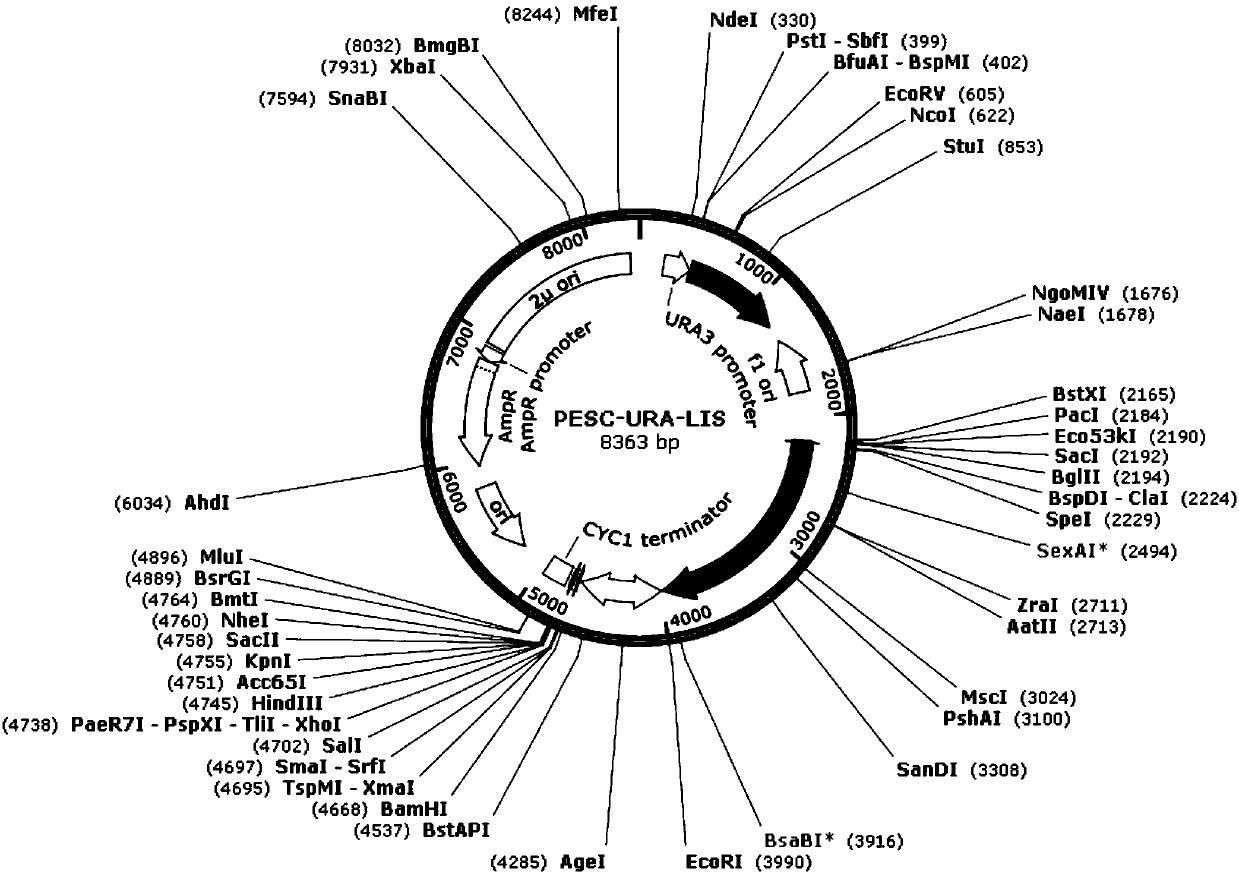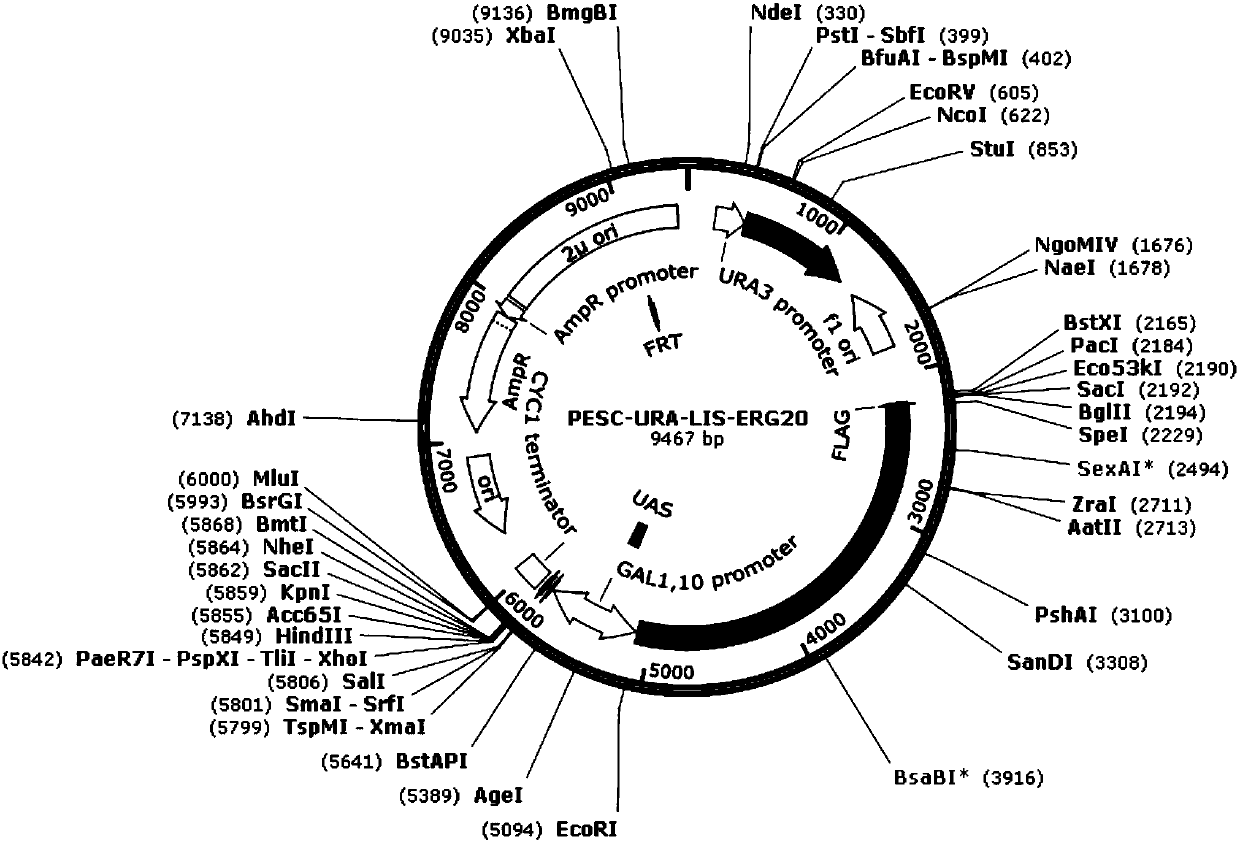Method for improving linalool synthesizing capacity of saccharomyces cerevisiae
A technology for Saccharomyces cerevisiae and linalool, applied in the field of metabolic engineering, can solve the problems of unstable expression of microorganisms, low yield of linalool, etc., and achieve the effects of increasing substrate supply, improving fermentation yield, and realizing ability
- Summary
- Abstract
- Description
- Claims
- Application Information
AI Technical Summary
Problems solved by technology
Method used
Image
Examples
Embodiment 1
[0019] The culture medium used in the present invention comprises as follows:
[0020] (1) YPD medium: 1 g of yeast extract, 2 g of peptone, 2 g of glucose, 100 mL of deionized water, mixed well, and sterilized at 115° C. in a sterilizing pot.
[0021] (2) Amino acid solution used in the fermentation medium: Weigh the following amino acids, mix them, and dissolve them in sterilized water to make the final concentration: L-Adenine hemisulfate salt (L-Adenine hemisulfate salt) 200mg / L, L-arginine hydrochloride (L-Arginine HCl) 200mg / L, L-histidine hydrochloride monohydrate (L-Histidine HCI monohydrate) 200mg / L, L-isoleucine (L-Isoleucine ) 300mg / L, L-leucine (L-Leucine) 1000mg / L, L-lysine hydrochloride (L-Lysine HCI) 300mg / L, L-methionine (L-Methionine) 200mg / L, L -Phenylalanine (L-Phenylalanine) 500mg / L, L-Threonine (L-Threonine) 2000mg / L, L-Tryptophan (L-Tryptophan) 200mg / L, L-Tyrosine (L- Tyrosine) 300mg / L, L-valine (L-Valine) 1500mg / L. The amino acid mother liquor was ste...
Embodiment 2 3
[0040] The construction of embodiment 2 three kinds of expression vectors and comparative effect
[0041] In order to improve the fermentation yield of linalool, three different expression vectors were screened and compared (1) pESC-URA-CoLIS (linalool gene); (2) pESC-URA-CoLIS::ERG20 (fusion gene); (3) pESC-URA-CoLIS / ERG20 (co-expressed gene).
[0042] 1. Preparation of Linear Vectors
[0043] ●The expression vector pESC-URA plasmid was digested with speI / EcoRI to prepare a linear vector. The size of the linearized vector was about 6.5kb, and the gel was cut and recovered.
[0044] ●The expression vector pESC-URA-LIS plasmid was digested with BamHI / SaI1 to prepare a linear vector. The size of the linearized vector was about 8.2kb, and the gel was cut and recovered.
[0045] 2. Target fragment amplification and vector construction
[0046] ●Construction of pESC-URA-LIS vector: Primer LIS-F / LIS-R amplifies the LIS fragment, the fragment length is 1755bp, and it is constructe...
Embodiment 3
[0060] The detection of embodiment 3 linalool
[0061] The recombinant strain was cultured in a liquid medium galactose medium (SG-URA) in a shaker flask (take 0.5 of the bacterial liquid (seed liquid) of the above-mentioned recombinant bacteria in 50 mL of SG-URA medium) and cultivate for 3 days. The production of linalool was detected by GC-MS by headspace sampling. Column thermostat temperature program mode: initial temperature 50°C, keep for 1min, increase temperature at 5°C / min to 115°C and hold for 1min; inlet temperature 240°C; mass spectrometry conditions: electron bombardment (EI) ion source; electron energy 70eV; transmission line The temperature is 280°C; the ion source temperature is 230°C; the quadrupole temperature is 150°C. The results showed that the vector (pESC-URA-LIS / ERG20) constructed by gene co-expression, after transforming S. The content of linalool reaches 3.5mg / L in the liquid.
PUM
 Login to View More
Login to View More Abstract
Description
Claims
Application Information
 Login to View More
Login to View More - R&D
- Intellectual Property
- Life Sciences
- Materials
- Tech Scout
- Unparalleled Data Quality
- Higher Quality Content
- 60% Fewer Hallucinations
Browse by: Latest US Patents, China's latest patents, Technical Efficacy Thesaurus, Application Domain, Technology Topic, Popular Technical Reports.
© 2025 PatSnap. All rights reserved.Legal|Privacy policy|Modern Slavery Act Transparency Statement|Sitemap|About US| Contact US: help@patsnap.com



